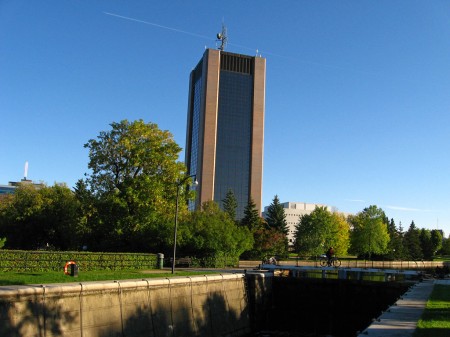
It is common to hear officials from developed states say things akin to this: “Yes, we are the ones who have historically done the most to create climate change – but we will be eclipsed by developing nations in the future.” While probably valid to some extent, there are many possible responses to this. There are arguments about who got rich how, as well as whose current per-capita emissions are high or low. What I am objecting to here is the curious methodology sometimes used to describe the developed/developing past/future dynamic.
Sometimes, states say both (a) developed states will continue to increase their emissions, in line with how they have been rising recently and (b) we will cut our emissions, according to our existing plan. If you step beyond that to compare your target future numbers with your business-as-usual projections for developing states, you make them look like a huge problem by comparison. One problem with this is that it is akin to saying the following: “I know I have been a problem gambler, but I have a plan to cut it down. I am going to halve my annual gambling losses in three years, and eliminate 80% of them in five. My buddy here, however, is a really compulsive gambler. He keeps losing more and more at an increasing rate. As such, his projected future losses are huge. Indeed, the amount I have lost so far is tiny compared to the amount he is going to lose in the future.” It is paradoxical because you are using the assertion that you will do better in the future to avoid present demands that you do more to reduce future emissions.
You are basically assuming that you can and will change, while others will not. No rich country government that has adopted targets for cutting emissions claims that cutting emissions requires cutting GDP. Nobody in power is touting a “stop climate change through recession” approach. As such, they must believe it possible to maintain economic growth while cutting emissions. While that may or may not be a valid assumption over various spans of time, it is an assumption that must be applied to developing states as well as developed ones.
In short, both developed and developing states need to cut emissions. The large probable future emissions from states like India and China are relevant to climate planning, partly insofar as concern about them could prompt useful transfers of wealth and low-carbon technology towards those states. At the same time, the wealth of the developed world – and the historical emissions that helped generate it – are also highly relevant. So too are the much larger non-climatic challenges being faced in the developing world. The developed world needs to start taking the kinds of steps necessary for actually hitting their 2020 and 2050 targets, in the process demonstrating to developing states how the transition can be accomplished in a politically acceptable way.








